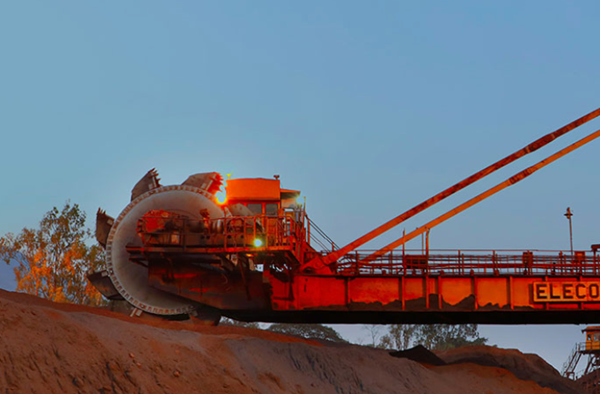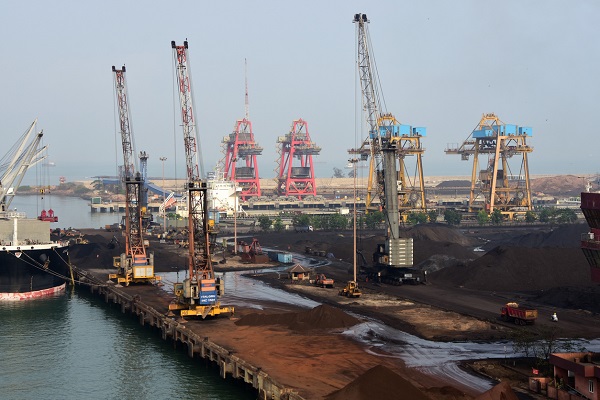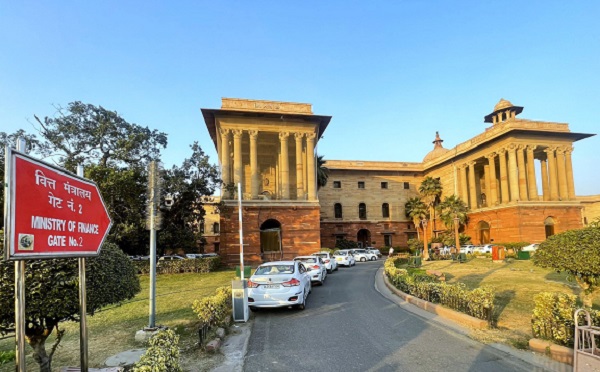.png)
August 25, 2025 at 12:47 PM IST
Very often, with state-owned mining companies, well-intentioned public policies can create perverse economic incentives. The National Mineral Development Corporation, India's largest iron ore miner, operates in such a system.
NMDC achieved record production levels, with 31% year-on-year growth in the April-June quarter of 2025-26. Yet, it faces relentless margin compression from a royalty system that automatically extracts more government revenue even as commodity prices strengthen and output increases.
Revenue rose 23.4% year-on-year, but profit margins collapsed by 880 basis points as royalty costs surged 32.5%, far outpacing revenue growth.
Royalties now consume 40% of NMDC's total revenues.
Of the NMDC's ₹26.8 billion royalty bill for April-June, the central government receives ₹540 million plus roughly ₹6.85 billion in corporate taxes, totalling ₹7.4 billion. State governments keep the remaining ₹26.26 billion directly, over three-quarters of total government revenue from NMDC's operations. Also, the District Mineral Foundation gets up to ₹8.84 billion, flowing to local districts under state administration.
This deterioration has been intensifying for years. NMDC's operating margins fell from 48.6% in 2021-22 to 41.3% in 2022-23, then further to 32.9% in the following year. While April-June EBITDA margin of 42% represents recovery from September-December’s trough of 36.5%, it remains well below the 50.7% achieved just a year ago.
Crucially, these aren't one-off concession fees but recurring operational costs paid on every tonne extracted.
July 2024's Supreme Court ruling entrenched this dynamic, delivering an 8:1 judgement clarifying royalty is not a tax; states can collect both royalties and impose additional mining taxes. The ruling allowed back-dated dues to 2005, potentially creating massive retrospective liabilities while legalising double taxation.
Competitive Disadvantage
Unlike NMDC, which operates as a pure merchant miner bearing full royalty burden, major private steel companies like JSW Steel, Tata Steel and SAIL operate captive iron ore mines that fundamentally sidestep the profitability challenge.
The likes of JSW Steel, Tata Steel and Steel Authority of India source iron ore from their own mines, paying identical royalty rates but absorbing these costs within their integrated steel manufacturing operations. A ₹1,000 per tonne royalty thus becomes merely one input cost among many in producing steel that might sell for ₹50,000-60,000 per tonne.
Besides, integrated producers treat mining as a cost centre rather than a profit centre, using transfer pricing between divisions to optimise tax efficiency while maintaining overall profitability through steel sales.
Vedanta faces similar challenges to NMDC. Iron ore, however, represents just one segment in Vedanta's portfolio of zinc-lead, aluminium, copper, oil & gas, and commercial power. When iron ore margins compress, Vedanta can absorb losses through profits from stronger metals cycles. NMDC enjoys no such luxury. Iron ore represents nearly 93% of segment revenue. The company has nowhere to hide from royalty pressures.
The regulatory framework compounds NMDC's challenges. Under India’s Mines and Minerals Development and Regulation Act, royalty rates can be revised once every three years. Historical precedent suggests persistent built-in cost escalation. Every revision since the 1990s has generally increased rates, the exception being brief periods during economic downturns.
This creates a structural cost inflation that productivity gains alone cannot offset.
NMDC had invested nearly ₹500 million in automation and digitisation during 2023. Mineral processing technology improved recovery rates by 8% and automated systems reduced operational costs by 12%.
Even so, NMDC faces regulatory costs that are essentially fixed and rising on a predictable cycle, while having no control over its largest expense component. The company's productivity improvements get overwhelmed by the reality of 40% revenue absorption through royalties.
The disconnect between operational performance and financial returns makes NMDC a valuation trap—impressive surface metrics but structural profitability headwinds.
The iron ore market may be strong, but for NMDC and its shareholders, that strength has become a costly curse.





